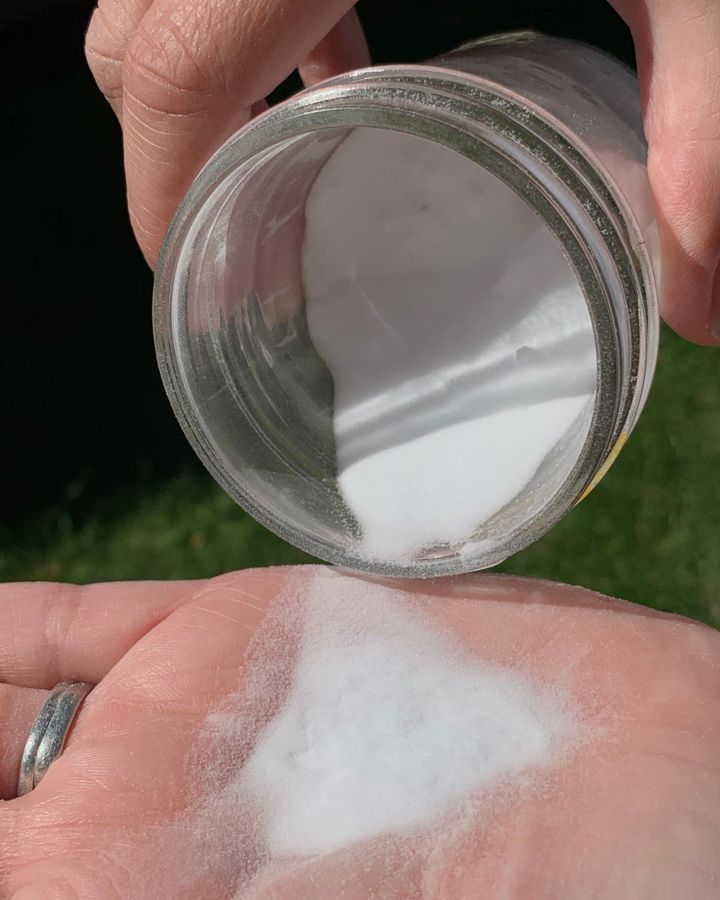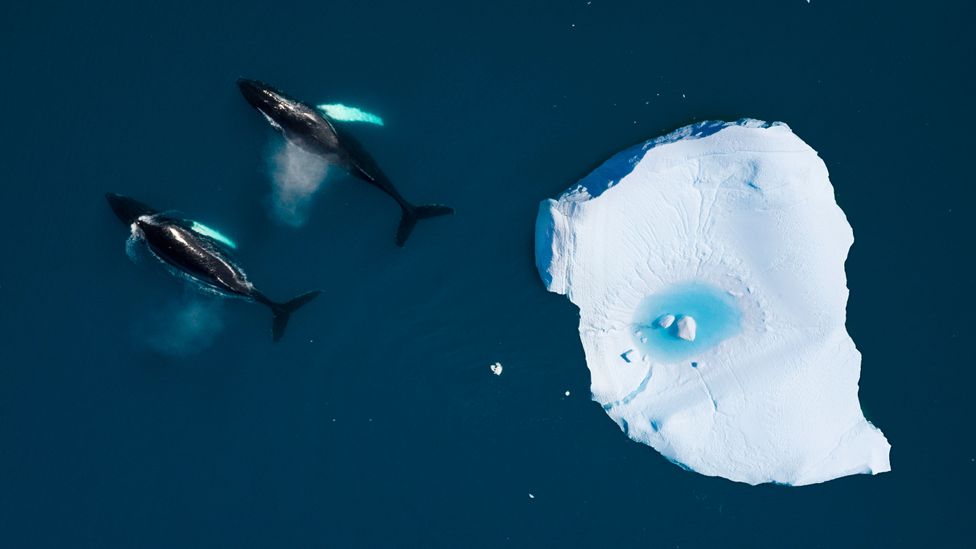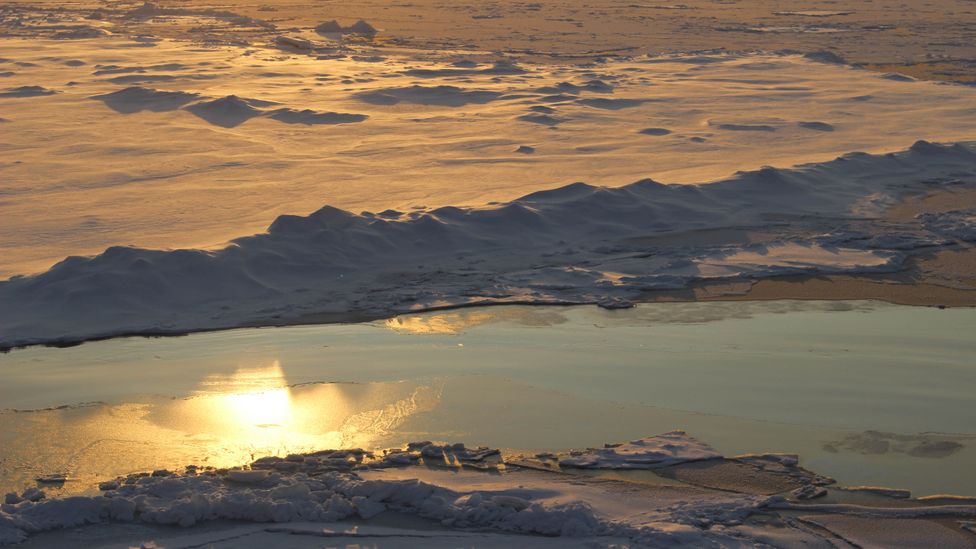One of the most important, yet underappreciated, features of the Arctic sea ice is the ability of its blindingly white surfaces to reflect sunlight. For at least as long as our species has existed, the frozen seas at the top of our world have acted as a massive parasol that helps keep the planet cool and its climate stable.
Yet now, much of that ice is rapidly vanishing. Rising temperatures have locked the Arctic in a self-destructive feedback loop: the warmer it gets, the reflective white ice dissolves into darker, blue water, which absorbs more of the Sun’s warmth rather than reflecting it back into space. Warmer water accelerates melting, which means yet more absorption of heat, which drives further melting – and so on in a vicious cycle that is part of the reason why the Arctic is warming around twice as fast as the rest of the planet. This July, ice cover was as low as it had ever been at that time of the year.
As planet-warming greenhouse gas emissions continue to rise, some have been driven to explore desperate measures. One proposal put forward by the California-based non-profit Arctic Ice Project appears as daring as it is bizarre: to scatter a thin layer of reflective glass powder over parts of the Arctic, in an effort to protect it from the Sun’s rays and help ice grow back. “We’re trying to break [that] feedback loop and start rebuilding,” says engineer Leslie Field, an adjunct lecturer at Stanford University and chief technical officer of the organisation.
The melting of the sea ice has impacts far beyond the Arctic and its inhabitants. It will contribute to rising sea levels, and some say it’s already disrupting weather patterns around the globe. If we lose our protective white shield entirely – which some reckon could happen just decades from now – it could have the same warming effect as another 25 years of fossil fuel emissions at current rates, which would mean more intense droughts, flooding and heat waves. By rebuilding sea ice, Field hopes her approach will also restore its ancient function as a planetary air-conditioner and help counteract the effects of global warming. (Read more about how ice loss in the Arctic affects the rest of the world.)

Tiny powder-like beads could increase the reflectivity of Arctic ice, to reflect more of the Sun's warmth back into space (Credit: Susan Kramer/Arctic Ice Project)
Many scientists frown upon such technological interventions in Earth’s planetary system, known broadly as “geoengineering”, arguing that fiddling with nature might cause further damage. However, “the utter lack of progress on climate mitigation is really opening up a space for all of these [geoengineering] things to be discussed,” says Emily Cox, who studies climate policy and public attitudes towards geoengineering at the University of Cardiff. That said, the urgency does not erase the uncertainty. “What do you do if something goes wrong… especially in the Arctic, which is already a fairly fragile ecosystem?”
You might also like:
- Russia’s grand plans to clean up the Arctic
- The coast overwhelmed with otters
- The deadly hail the size of boulders
Field launched the Arctic Ice Project — formerly known as ICE911 — in 2008, soon after watching the climate change documentary An Inconvenient Truth, which convinced her of the urgency of doing something about the melting sea ice. In particular, it’s the fate of old, thick sea ice that worries her the most – the kind that lasts multiple years. This mature ice, dazzlingly white, has a high albedo, meaning it’s extremely good at reflecting sunlight – much more so than the thinner and darker young ice that forms each polar winter only to melt again during the summer. Yet over the past 33 years, that ice has dwindled by a staggering 95%.
What if, Field asked, she could layer a reflective material on top of the young ice to protect it during the summer months? If it had that extra protection, could it rebuild into sturdy multi-year ice, and kick-start a local process of ice regrowth? She settled on silica – or silicon dioxide – which occurs naturally in most sand and is often used to make glass, as the material of choice. She found a manufacturer that turns it into tiny, brightly reflective beads, each one 65 micrometers in diameter – thinner than a human hair, but too large for them to be inhaled and cause lung problems, Field says. The beads are also hollow inside, so they’ll float on water and continue to reflect away sunlight even if the ice begins to melt.
Over the past decade, she and her team have scattered the silica spheres over several lakes and ponds in Canada and the United States, so far with encouraging results. For instance, in a pond in Minnesota, just a few layers of glass powder made young ice 20% more reflective – enough to delay the melting of the ice. By spring, when the ice in an uncovered area of the pond had completely vanished, there was still nearly a foot of ice in the section treated with the glass beads.

Dark blue water absorbs more of the Sun's rays, accelerating the process of global warming - but bright white ice reflects that radiation away (Credit: Getty Images)
Field doesn’t want to carpet the Arctic in glass. Instead, she plans on distributing it strategically to protect some particularly fast-melting, vulnerable areas, like the Fram Strait, a thin passage between Greenland and Svalbard. According to results of a climate model she presented last December at the annual meeting of the American Geophysical Union, treating the Fram Strait could lead to large-scale ice regrowth across parts of the Arctic.
Scientists agree that the beads are well-intentioned, but worry about their potential effects on the Arctic ecosystem. If they float around there indefinitely, “it’s just going to clog up the ocean and mess with the ecosystem,” says Cecilia Bitz, an atmospheric scientist at the University of Washington who specialises in Arctic sea ice.
Field argues that the balls are safe because silica is so abundant in nature – indeed, it routinely washes from weathered rocks via rivers into the sea. And according to some safety testing as part of her 2018 study, the beads, when ingested, cause no ill effects in at least two species – sheepshead minnow fish and northern bobwhite birds.
However, some biologists are concerned about the potential effects on the creatures at the base of the Arctic food chain. Depending on how much light the silica beads reflect, they could block sunlight from photosynthesising plankton, such as diatoms, algae that live under the sea ice and around it. Any change in plankton abundance could cascade up the food web and have unpredictable effects on organisms from fish to seals and polar bears, notes Karina Giesbrecht, an ocean chemist and ecologist at Canada’s University of Victoria who has studied the role of silica in Arctic ecosystems.
On top of that, the silica balls are similar in size to diatoms, which are eaten by zooplankton known as copepods, Giesbrecht notes. If the beads sank into the water column, copepods might consume them thinking they are diatoms, without gaining any nutrition. In the worst case, the copepods could starve, with knock-on effects for other members of the Arctic ecosystem.
So far, Field has been using beads that mostly stay afloat (though some inevitably sink each season), and she is planning to test their impact on plankton ecosystems. If there are any harmful effects, she’ll explore ways of tailoring the beads to make them ecologically safer, she says. One option she is considering is whether to tweak their composition such that they dissolve after a period of time. There are many other questions that her team, which is about to undertake further testing in seawater-filled pools in Alaska, will have to answer to convince the world that the approach is safe and effective.

The young, thin Arctic ice is darker and less reflective than the thick, white, old ice – pushing the Arctic into a feedback cycle of warming (Credit: Martha Henriques)
For one, Mark Serreze, a climate scientist who directs the US National Snow and Ice Data Center at the University of Colorado, Boulder, wonders whether they’ll work as intended. “If you put down the silica beads in an area of fast-moving ocean currents, notably the Fram Strait, they will be quickly dispersed,” rendering them ineffective, he says.
The proposal also raises financial questions, like who would foot the approximately $1-5bn (£800m to £4bn) annual bill for making, shipping, testing and distributing the necessary silica beads in the Fram Strait. It may be an eye-watering figure, but it starts to look small next to the estimated $460bn (£360bn) that the United States incurred in extreme weather and climate disasters between 2017 and 2019 alone, Field notes.
Researchers are exploring the feasibility of other geoengineering approaches to save the melting Arctic, but none come without problems. One, for instance, would entail building millions of wind-powered devices to pump water from the deep to the ice surface in order to build up thicker layers of ice – which is energy-intensive and might not be very effective, Bitz says. She and Serreze view such approaches as stop-gap solutions to climate change, in that they only treat single symptoms – in the case of silica dust, temperatures – while doing nothing about the root cause of it. If Field’s strategy works as intended, “that’s wonderful,” Bitz says, “but I know that not emitting CO2 in the first place will work.”
Field agrees that geoengineering is in no way a replacement for reducing carbon emissions. Rather, she sees it as a chance to buy the time needed for world economies to decarbonise and stave off the worst impacts of climate change. The silica beads, she says, are “the backup plan I hoped we’d never need”.
--
The emissions from travel it took to report this story were 0kg CO2. The digital emissions from this story are an estimated 1.2g to 3.6g CO2 per page view. Find out more about how we calculated this figure here.
--
Join one million Future fans by liking us on Facebook, or follow us on Twitter or Instagram.
If you liked this story, sign up for the weekly bbc.com features newsletter, called “The Essential List”. A handpicked selection of stories from BBC Future, Culture, Worklife, and Travel, delivered to your inbox every Friday.
"save" - Google News
September 24, 2020 at 06:13AM
https://ift.tt/3i2FkmR
The daring plan to save the Arctic ice with glass - BBC News
"save" - Google News
https://ift.tt/2SvBSrf
https://ift.tt/2zJxCxA
Bagikan Berita Ini














0 Response to "The daring plan to save the Arctic ice with glass - BBC News"
Post a Comment